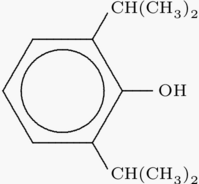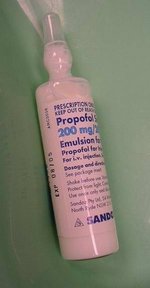Monday
"Doc," exclaimed the happy patient, "I did it myself. I'm as good as you are." This elderly man was described by WLL in a past edition of "Diary" (September 15, 1994). He was WLL's first "cure" of benign positional vertigo (BPV) using the Epley maneuver. The "canalith repositioning procedure" is for the in-office treatment of BPV. WLL reported that "this maneuver is extremely easy to perform, takes less than 10 minutes, usually causes no patient discomfort, requires no medication and was learned by reading a single paper from the literature." He has found that in many cases, the symptoms are immediately quelled by the procedure. Now comes a report that patients can perform a modification of this procedure themselves (Neurology 1999;53:1358-60). According to the report, symptoms resolved within seven days in 18 of 28 patients (64 percent) who performed a modified version of the Epley procedure three times a day until the BPV was gone. Instructions and diagrams can be found at a Web site (http://www. charite.de/ch/neuro/vertigo.html). You can choose instructions depending on whether the right or left ear is affected. A more detailed review of the Epley procedure can be found in the New England Journal of Medicine (1999;341:1590-6).
Tuesday
WLL remembers a case he was involved in several years ago. Although a mystery then, it seems much clearer now. At that time, the young couple who had sat in front of WLL was frustrated. Although they had previously achieved pregnancy quickly and already had two children, they had been trying to conceive again for more than a year without success. The only change in their history was his hypertension (well-controlled with a low-dose, sustained-release formulation of nifedipine). He had improved his nutrition and his weight. Physicians' Desk Reference indicated no sexual or reproductive effects of nifedipine. The couple wanted something done. WLL decided to temporize and suggested that the husband consider a trial period off the nifedipine. His blood pressure stayed normal off the medication, and her pregnancy test was positive within three months. WLL didn't think about this case again until he read about a presentation given at the American Society for Reproductive Medicine that discussed the reversible male infertility state produced by nifedipine--apparently with few side effects. Researchers say the use of nifedipine produces infertility within one month and the infertility is reversed within three months of stopping the drug.
Wednesday
"Doc, please let me out of here!" were the words that greeted JTL today while visiting one of his patients during hospital rounds. The patient, a 39-year-old man previously in excellent health, had been admitted with complaint of left-sided facial numbness as well as "pressure" in the upper right arm. A neurologist had been consulted and had ordered a computed tomographic (CT) scan of the head and carotid Doppler studies. As the patient was speaking, JTL could see that there was a definite hemifacial palsy that involved the forehead. JTL recalled the phrase he had heard often from his neuroanatomy professor while he was at George Washington University School of Medicine: "A central 7th [nerve lesion] spares the forehead." In this patient's case, it was clear that the cause of the symptoms was a peripheral lesion (e.g., Bell's palsy) rather than a central 7th cranial nerve lesion, because of the involvement of the forehead on the affected side. As for the transient right arm complaints, JTL could recall that left-sided facial symptoms do not anatomically correlate with right-sided arm complaints--and the normal head CT scan further proved this point. JTL was happy to let this patient leave the hospital and was not at all surprised to learn the following day that the carotid Doppler study revealed no disease.
Thursday
A new fact sheet titled "What Works for Congestive Heart Failure?" reviews available literature for three common alternative therapies. For coenzyme Q10, it was concluded that it "appears to be a promising agent in the symptomatic treatment of congestive heart failure." In controlled trials, patients who are New York Heart Association (NYHA) class III and IV benefit from dosages of 50 to 150 mg per day (up to 2 mg per kg per day). Because a mortality benefit has not been demonstrated with Q10, the authors concluded, "inhibitors, diuretics, digoxin and beta blockers should remain the cornerstones of therapy." The review also discusses hawthorne, a positive inotrope that has been used to improve cardiac output and exercise tolerance in patients with heart failure. According to the Natural Medicine's Comprehensive Database, hawthorne may have some advantages over digoxin in mild heart failure (stage II NYHA) but is inappropriate in more advanced stages. The dosage range is 160 to 900 mg of standardized extract per day. Lastly, the review looked at L-carnitine and concluded, "it is not clear whether L-carnitine provides any benefit beyond well-established therapies." Because these therapies are not regulated in the United States, be sure that your patients, if they choose to use them, use reputable brands produced to USP specifications.
Friday
JTL, often accused of being "hypersensitive" to his surroundings, today noted a distinct change when he sat in the examination rooms with his patients, yet could not put his finger on the culprit. Finally, while standing at his podium, he was approached by his nurse, who remarked, "How do you like the music?" JTL realized that he was listening to the smooth strains of Frank Sinatra, Harry Belafonte and Tommy Dorsey rather than the contemporary hits of previous weeks. While background music may not be an issue for many other physicians, JTL believes that patients are likely affected by the music they listen to while waiting. JTL has found this switch to music of bygone years a soothing influence. Later that day, while counseling one of his patients who has been under significant stress, JTL heard the song that had been played at JTL's wedding reception. The song reminded JTL to share with his patient the need to keep marriage fresh and romantic, and suggested to the patient that he and his wife begin to put aside at least one evening a month for a "date night." The suggestion was most welcomed by the patient, who recognized that he had indeed been growing apart from his wife and family.
Saturday/Sunday
In an earlier "Diary," JTL shared the story of Clyde who, newly diagnosed with lung cancer, required emergency intubation and mechanical ventilation after developing acute respiratory failure. As JTL had predicted, Clyde was unable to be weaned off the ventilator without developing respiratory failure. Hence, continual sedation had been the rule over the past week. Today, on Clyde's 62nd birthday, all concerned had agreed to remove Clyde from life support. JTL, after visiting at length with Clyde's wife and children, received their approval. After weaning Clyde off Diprivan, JTL, in the presence of Clyde's wife, witnessed the "nod" to go ahead with extubation. Following prayer with the family, Clyde was extubated, and a nonrebreathing oxygen mask placed over his mouth and nose. The family and nurses sang "Happy Birthday," and a small piece of cake was placed on his tongue. JTL watched in awe as Clyde beamed, his color having actually improved. After writing orders to transfer Clyde out of the ICU, JTL turned to leave. Clyde's wife ran to JTL and asked him to return to the room, where Clyde, despite his inability to speak following so many days of intubation, mouthed the words, "Thank you." The next day JTL returned to the hospital to pronounce Clyde's death, a death that, all things considered, was as peaceful as any death that JTL had ever witnessed.
This is one in a series by Walter L. Larimore, M.D., John R. Hartman, M.D., and John T. Littell, M.D., three family physicians in private practice in Kissimmee, Fla.
COPYRIGHT 2000 American Academy of Family Physicians
COPYRIGHT 2000 Gale Group




